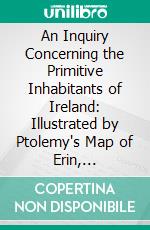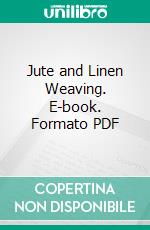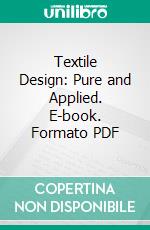Thomas Wood eBooks
eBooks di Thomas Wood di Formato Pdf
An Inquiry Concerning the Primitive Inhabitants of Ireland: Illustrated by Ptolemy's Map of Erin, Corrected by the Aid of Bardic History. E-book. Formato PDF Thomas Wood - Forgotten Books, 2017 -
Much learning has been abused, and mueh time wasted in endeavours to prove the authenticity of this history. One of the most learned and zealous supporters of the Milesian story, anxious to show that it could not be void of foundation, has, lately, by venturing to specify the tribe which, he says, had emigrated from Spain, unwittingly degraded the family he meant to ennoble — Vide Note 196.
Jute and Linen Weaving. E-book. Formato PDF Thomas Woodhouse - Forgotten Books, 2017 -
Practically all the original matter is reproduced in this edition; any small parts which have been omitted have been replaced by illustrations of more modern machinery. The additional matter embraces 108 new illustrations with the corresponding text; it includes the two distinct types of automatic weft supply mechanism, the chain linking machine, terry towel motions, warp stop motions, indi vidual motor drives, improved types of box motions and jacquards. In nearly every chapter there has been inserted one or more new illustrations of modern weaving machinery. We desire again to express our best thanks to all those who have been kind enough to assist us in this work, and to the publishers and printers for the excellent manner in which they have done their part.
Textile Design: Pure and Applied. E-book. Formato PDF Thomas Woodhouse - Forgotten Books, 2017 -
On the other hand, many cloths are produced in which the weave structure or build of the fabric is of vital importance: in which the whole effect depends upon the method of interlacing the warp and the weft in the process of weaving. Such cloths are made from yarns of every well-known kind of textile fibre. Designers of these fabrics must have an intimate knowledge of cloth structure, and should thoroughly understand how to make due allowance for the various restrictions imposed upon them by the particular type of loom in which the designs are to be developed. For such men a purely art training is not an absolute necessity, unless, indeed, when they are engaged in the preparation of the more elaborately figured kinds. Where coloured yarns are extensively used, as in the woollen, worsted, and silk industries, 3. Sound knowledge of the principles of colouring and their application to the blending of the fibres, and to the arrangement of the coloured yarns, is essential; while, for certain kinds of cloth, e.g., tapestries, brocades, etc., the designer is expected to be conversant with all branches — art, colour, weave structure, and processes of production.


